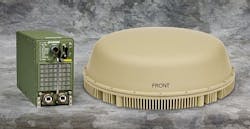Navy to enhance reliability of remote-control unmanned underwater vehicle for coastal defense and ISR
The RMMV will support naval forces that do not have the kinds of surface ships for which the RMS was designed. It will use a portable launch and recovery system from either a pier or a ship of opportunity. The system has been launched in less than 10 minutes with a pier side overhead crane.
In fact, Lockheed Martin now uses a small overhead crane for launch and retrieval at our pier during daily operations. Launch or retrieval takes less than ten minutes and few support personnel.
Lockheed Martin engineers also have developed a portable command, control and communications (C3) system for the RMMV that is contained in a standard CONEX container. This C3 system can be loaded onto the deck of a ship of opportunity, or parked on the beach during operations to enable a RMMV to operate from a port, harbor, or coastal area without a host ship.
The contract calls for Lockheed Martin to develop a two-year comprehensive development and test program for the RMMV RGP to verify the system complies with RMMV system requirements and is prepared for installation on, and operations from, the Littoral Combat Ship.
The test program will include systems and design reviews using predictive reliability tools; spiral development with in-water testing to assess progress and potential areas of reliability enhancements; installation of RMMV reliability upgrades; and ancillary support.
Lockheed Martin engineers will in Palm Beach, Fla.; Syracuse, N.Y.; and Manassas, Va., Navy officials say, and should be finished by December 2013.
For more information contact Lockheed Martin MS2 online at www.lockheedmartin.com/ms2, or Naval Sea Systems Command at www.navsea.navy.mil.
